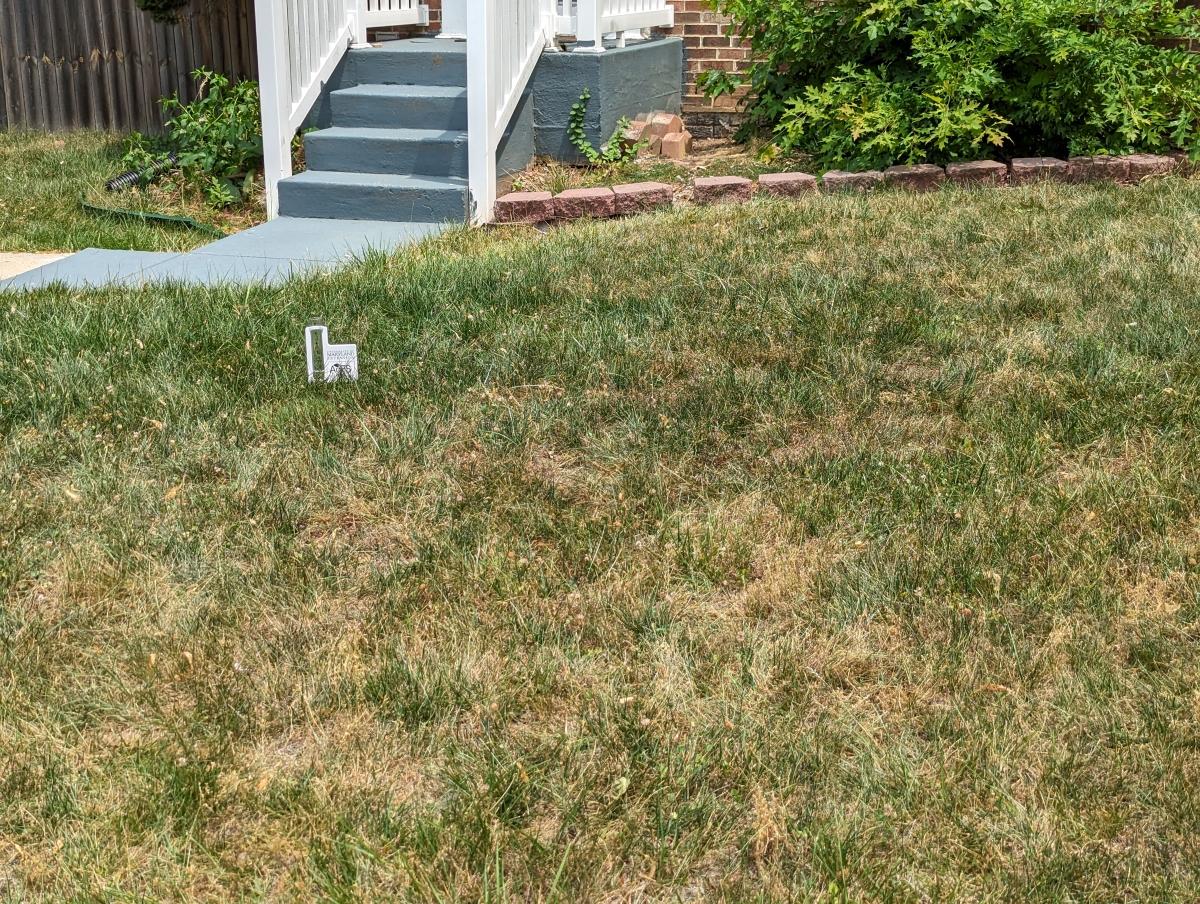Lawn irrigation is not encouraged, but there are certain times when it is necessary.
- Water on an as-needed basis, not on a regular schedule (this includes when using an irrigation system).
- Newly seeded, sodded, or lawns less than two years old, should be irrigated. Water if the grass blades begin to wilt, develop a blue-gray color, or show footprints after being walked upon (see photo above).
- Established tall-fescue lawns can go dormant during the summer. Dormancy is a survival mechanism. Lawns will typically recover quickly when rainfall returns, except if we experience a prolonged drought. Some reseeding may be necessary in the late summer/fall.
- Dormant lawns continue to protect water sources by holding soil in place and filtering potential pollutants. Do not fertilize dormant lawns, mow less frequently, and adjust the mowing height to about 4 inches.
- Water in the early morning, before 10 a.m. to minimize leaf wetness. Wet grass promotes disease problems.
- Water slowly to prevent runoff. Use a sprinkler to apply 1 inch of water to the lawn. Place a shallow can in the area being watered to monitor the amount being applied. After an inch of water collects in the can, check the soil moisture. Insert a screwdriver or other type of probe in the area. The soil should be moist 4 to 6 inches down.
- Frequent, shallow watering, as sometimes applied with an irrigation system, tends to keep the upper layers of soil near a point of saturation most of the time. This encourages shallow rooting, disease, weeds like green kyllinga and yellow nutsedge, and insect problems (grubs). Automatic irrigation systems should be adjusted to the needs of grass plants and turned off during wet periods during the growing season.
